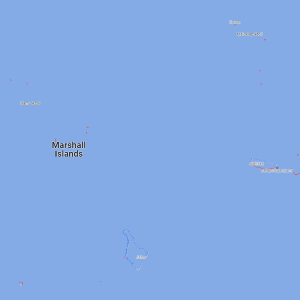
-
Agriculture

Project Name:Livestock Project (Marshall Islands)
Project status:Completed projects
Cooperating Country:Asia-Pacific, Marshall Islands
Project Description:The total population of the Marshall Islands is 62,857 people (according to World Bank 2012 statistics) while total annual consumption of pork is about 124 tons (in 2011, Marshall Islands agricultural import data incorporated rough estimates for freshly slaughtered animals). The self-sufficiency rate of about 27.8 percent is equivalent to only 1.6 kg of pork consumption per capita per year, which is extremely low compared to most developing countries. There is still a significant gap to be overcome in order to achieve the goal of food security.
The local habit of allowing pigs to graze results in slow growth and a low fertility rate, and local breeds cannot serve the high demand in and around Majuro. The raw materials that go into pig feed are also lacking in the Marshall Islands and this aspect of production relies on foreign imports, with commercial pig feeds costing about US$0.78 per kilogram on average. Channels providing farmers with access to feed, and associated costs, have become major constraints upon the development of the swine industry.
The project will increase stocks of locally raised pigs, improve local husbandry skills and improve small-scale farmers’ financial well-being. Training courses and technical guidance will be provided to build self-sufficient management capacity throughout the Marshall Islands.
Overall, this project will:
1. Promote breeding and provide guidance to farmers on selling produce to the market; promote alternative, locally sourced feeds; establish a simple wastewater treatment system.
2. Provide consultation services and guidance to farmers.
3. Provide guidance to farming organizations on production and marketing activities.
4. Hold training sessions and demonstration seminars.
To watch a video made by the TaiwanICDF: Where do pigs come from?-Livestock Project (Marshall Islands)
Project No:TCD-2011-E06-02
Implementation Start Date:2011-01-01
Implementation End Date:2014-12-31
Project Objectives:The objectives of this project are:
- Maintain a breeding herd of 70 pigs and raise a total of 1,360 piglets for distribution to farmers to improve the genetic makeup of local breeds and increase production.
- Produce 80 tons of alternative feeds made from locally sourced raw materials; promote the use of such feeds by local farmers as a means of reducing operating costs.
- Establish 1 simple wastewater treatment system to support environmental sustainability and promote the recycling of manure.
- Hold 12 pig auctions; scale up production by providing consultation services and guidance on applying for loans and microfinancing as a form of start-up funding.
- Provide 12 training seminars, workshops or technical courses, each designed to meet specific project transfer targets, for the benefit of 240 pig farmers.
Executing Agency:
- Taiwan Technical Mission in the Republic of the Marshall Islands
- Ministry of Resources and Development (Republic of the Marshall Islands)
Current Progress:To the end of December 2014, the following activities have been completed:
In 2011:
- Maintained a breeding herd of three boars and 35 sows.
- Bred 394 piglets and distributed 240 to farmers.
- Manufactured 25.8 tons of alternative feed for distribution to farmers.
- Produced 5,524 eggs, hatched 1,307 chicks and distributed 90 chicks.
- Held three poultry and livestock management training workshops.
In 2012:
- Maintained a breeding herd of 35 pigs and culled 20 pigs.
- Bred 354 piglets for distribution to farmers.
- Manufactured 21.4 tons of alternative feed for distribution to farmers.
- Held five swine management training workshops for the benefit of 82 farmers.
In 2013:
- Maintained a breeding herd of 70 pigs.
- Manufactured 22.9 tons of alternative feed for distribution to farmers.
- Bred 429 piglets for distribution to farmers.
- Held three pig auctions.
- Held three swine management training workshops.
- Extended a wastewater treatment system to two farmers; continued to operate a biogas system at the Taiwan Technical Mission farm.
In 2014:
- Maintained a breeding herd of 71 pigs.
- Bred 491 piglets for distribution to farmers.
- Manufactured 29.4 tons of alternative feed for distribution to famers.
- Held 2 pig auction.
- Provided three swine management training workshops.
- Engaged in capacity building and skills transfer activities.
Projected Benefits:
- Seventy percent of the genetic makeup of local breeds of pig will be domesticated by importing breeding pigs.Improve the rate of meat growth in pigs by promoting the breeding of high-quality piglets, for an estimated output of US$295,000.
- Raise farmers’ profits by reducing their feed costs by 50 percent.
- Reduce levels of imported pork and safeguard food safety by developing the local market for live pigs and fresh pork, thereby meeting 35 percent of the needs of local consumption.
- Develop a livestock industry that places value on quality of life, production values and ecology.
Mission:Taiwan Technical Mission in the Republic of the Marshall Islands
- Update:2019-11-26
- Hits:3697
